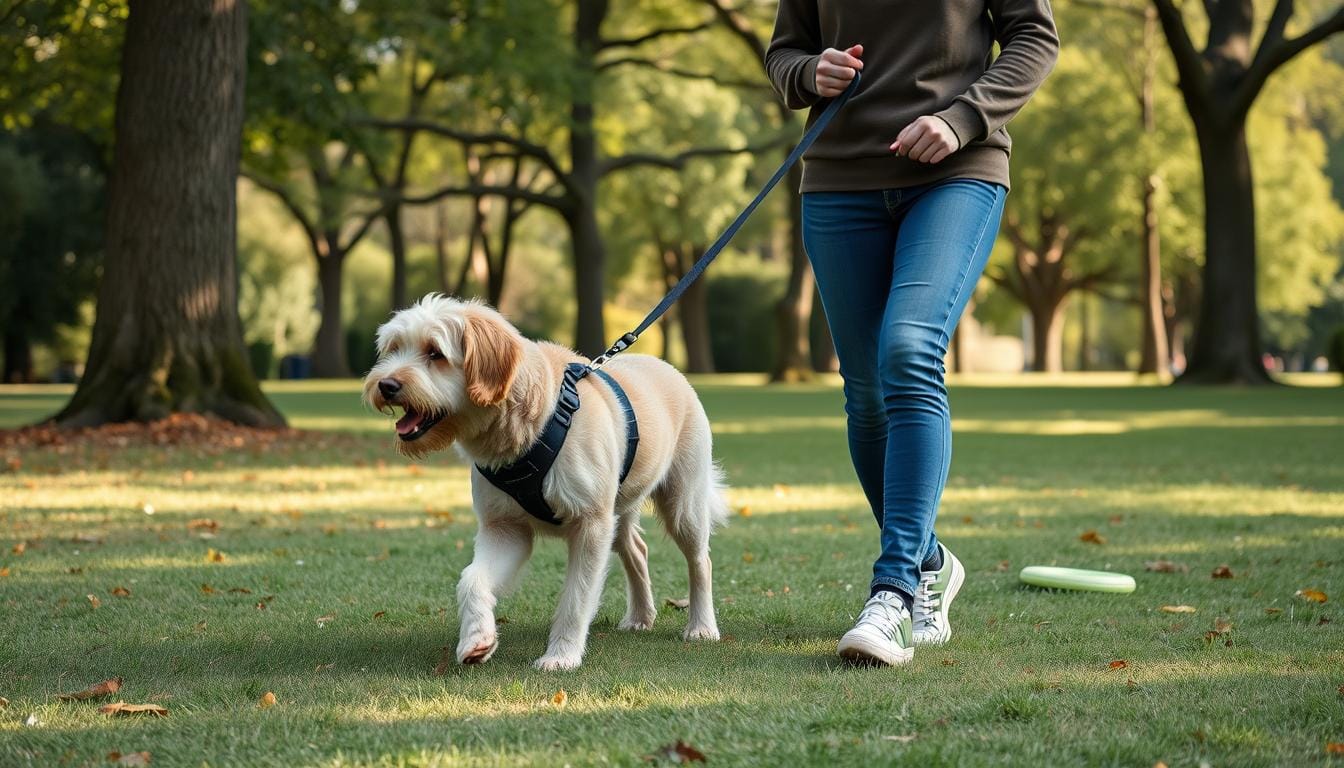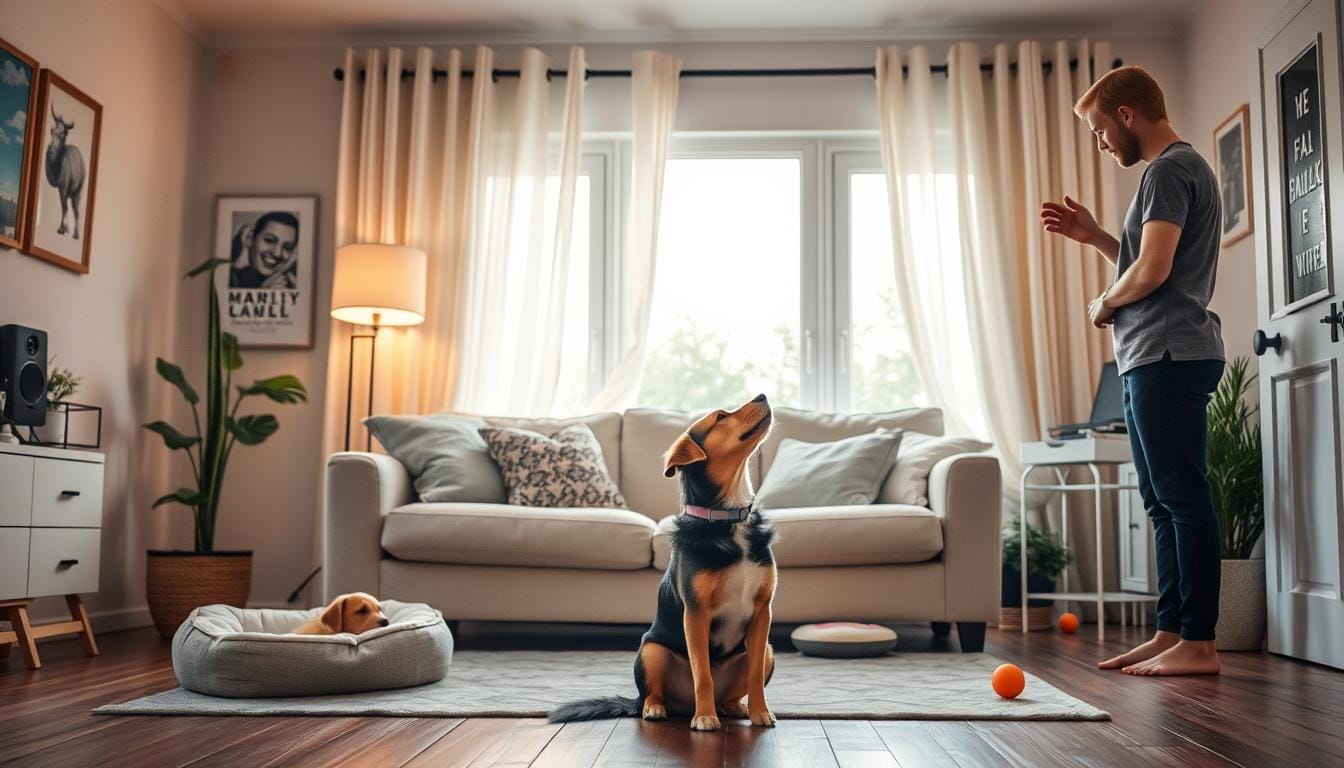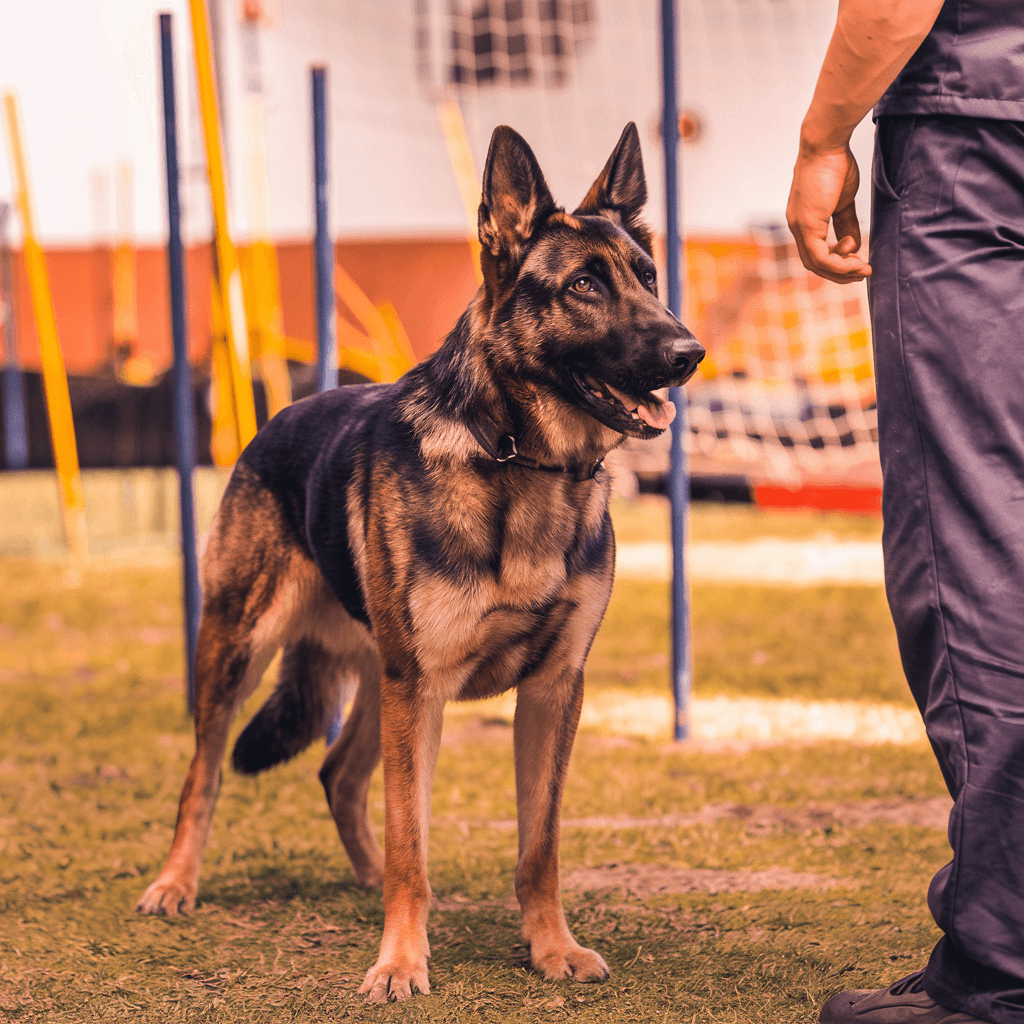Dogs can sense human emotions instinctively. They have evolved to read our subtle cues. They can detect changes in our body language and scent to understand our emotions.
Understanding our dogs’ needs is key. This includes knowing how to handle minor injuries and dog wound care. Many pet owners wonder about using human medications like Neosporin for dogs. Let’s explore this topic and discover safe alternatives for canine first aid.
Neosporin is a common antibiotic ointment for humans. But is it safe for dogs? It can be used in small amounts for certain wounds. However, it’s not always the best choice for every dog.
As responsible pet owners, we must prioritize our dogs’ health and safety. This means being informed about proper wound care techniques. We should know when to seek professional help. Let’s delve deeper into the world of canine first aid and discover the best practices for keeping our furry friends happy and healthy.
Key Takeaways
- Neosporin can be safe for dogs in small amounts, but caution is necessary
- Professional veterinary care is crucial for larger or deeper wounds
- Dogs may lick off topical treatments, so consider wound location
- Monitor for allergic reactions when using Neosporin on dogs
- Pet-safe wound care products are available and designed for canine skin
- Consult a veterinarian for proper care and infection prevention
- Alternative ointments and natural remedies can be effective for minor wounds
Understanding Neosporin and Its Components
Neosporin is a well-known over-the-counter medication for wound healing. It’s a triple antibiotic ointment made to stop and treat minor skin infections. These infections can come from small cuts, scrapes, or burns.
What is Neosporin?
Neosporin is a topical antibiotic cream that has been in first aid kits since the 1950s. It’s the top choice for doctors in the US for treating minor wounds. It’s known for preventing infections in small wounds.
Active ingredients in Neosporin
The ointment has three main active ingredients:
- Neomycin
- Polymyxin B
- Bacitracin
These antibiotics work together to stop bacteria from growing around the wound. They provide 24-hour protection from infection for minor cuts and scrapes.
How Neosporin works on wounds
Neosporin creates a protective barrier over the wound, stopping bacteria from getting in. It also acts as a moisturizer, helping the wound heal by keeping it moist. The antibiotics in the ointment prevent bacteria from growing, lowering the chance of infection.
Even though Neosporin works well for minor wounds, it’s not for deep cuts, puncture wounds, animal bites, or severe burns. For these, you need to see a doctor.
“NEOSPORIN® Original Ointment provides 24-hour protection from infection for minor cuts and scrapes, thanks to its effective germ kill formula.”
Remember, using too much Neosporin can lead to antibiotic resistance. Always follow the directions and talk to a healthcare professional for wounds that don’t heal or are very severe.
Neosporin for Dogs: Safety Considerations

Dog owners often wonder, “Can you put Neosporin on a dog?” The answer isn’t straightforward. While Neosporin can be used on dogs in certain situations, it’s crucial to approach its use with caution.
Neosporin contains three antibiotics: bacitracin, neomycin, and polymyxin B. These work together to kill bacteria and prevent infections. But is Neosporin safe for dogs? In small amounts and for minor wounds, it can be. Yet, there are risks to consider.
Allergic reactions are possible when applying Neosporin to a dog’s skin. Signs may include redness, rash, or hives. It’s wise to do a patch test first. Apply a tiny amount and watch for any adverse reactions.
Ingestion is another concern. If a dog licks off and swallows Neosporin, it can cause stomach upset. Symptoms might include vomiting, diarrhea, and loss of appetite. To prevent this, avoid using it on areas your dog can easily reach with its tongue.
- Use Neosporin sparingly and only on minor cuts or scrapes
- Clean the wound before application
- Don’t use on deep or bleeding wounds
- Consult a vet before using, especially for first-time use
Remember, while Neosporin can be helpful, it’s not always the best choice for canine wound care. For serious injuries or if you’re unsure, it’s best to seek professional veterinary advice.
When to Use Neosporin on Your Dog
Neosporin can be a helpful tool for dog wound treatment. But, it’s important to know when and how to use it safely. We’ll look at the right times to use Neosporin on your furry friend and the precautions to take.
Suitable Wound Types
Neosporin is best for minor cuts and scrapes on dogs. It can help prevent infection in small wounds, such as:
- Superficial scratches
- Minor abrasions
- Small cuts
- Broken nails
For larger wounds or deep cuts, skip the Neosporin and seek veterinary care immediately.
Precautions Before Use
Before applying Neosporin, take these steps:
- Clean the wound with mild soap and warm water
- Perform a patch test on a small area of skin
- Keep your dog from licking the treated area
Application Techniques
To properly apply Neosporin:
- Use a thin layer of ointment
- Avoid sensitive areas like eyes and mouth
- Monitor the wound for signs of infection or allergic reactions
Remember, canine first aid at home is great for minor issues. But, always consult your vet for personalized advice on wound care. They can recommend the best treatment options for your dog’s specific needs.
Potential Benefits of Neosporin for Canine Wound Care
Neosporin is great for dogs because it has three antibiotics. These are bacitracin zinc, neomycin sulfate, and polymyxin B. They work together to stop bacteria from growing in small wounds.

Neosporin helps wounds heal faster. It creates a thin layer that keeps the wound moist. This helps the body heal and might prevent scars.
Neosporin is handy when you can’t get to a vet right away. It’s simple to use and protects the wound until you can get help. But, remember, it’s only for minor injuries. For serious wounds, you need to see a vet.
“Neosporin can be a helpful tool in your dog’s first aid kit, but it’s important to use it sparingly and under the guidance of your veterinarian.”
But, we must be careful with Neosporin. Some dogs might have an allergic reaction to it. Always talk to your vet before using it on your dog’s wounds. This ensures it’s safe and works well.
Risks and Side Effects of Using Neosporin on Dogs
Neosporin is a common antibiotic ointment for minor wounds. It’s generally safe for dogs when used right. But, there are risks and side effects to think about. Let’s look at these to keep your furry friend safe.
Allergic Reactions and Skin Irritation
Dogs can have allergic reactions to Neosporin. Neomycin, a key ingredient, can cause hypersensitivity in some pets. Signs include redness, itching, and swelling where you applied it.
If you see these signs, stop using Neosporin. Talk to your vet right away.
Ingestion Concerns
Dogs often lick their wounds, which can lead to ingesting Neosporin. This can cause stomach upset, vomiting, or diarrhea. In rare cases, it can upset their gut microbiome.
To avoid this, use an Elizabethan collar (cone) to stop your dog from licking the treated area.
Antibiotic Resistance Considerations
Using antibiotics like in Neosporin too much can lead to antibiotic resistance. It’s important to use Neosporin only when needed. For serious injuries or ongoing issues, always get professional vet care.
| Neosporin Component | Potential Risk |
|---|---|
| Neomycin | Allergic reactions, skin irritation |
| Petroleum base | Gastrointestinal upset if ingested |
| All components | Antibiotic resistance with overuse |
Remember, Neosporin is okay for minor wounds but not a replacement for vet care. Always watch your dog after applying any medication. If you’re worried about your pet’s health, get expert advice.
Alternative Wound Care Options for Dogs
There are many safe ways to care for dog wounds. These options work well without the risks of Neosporin.
Antimicrobial sprays made for pets are great for small cuts. They are designed to be safe for dogs. Chlorhexidine sprays or wipes are also good for cleaning and disinfecting wounds.
Manuka honey is a natural choice for wound care. It fights bacteria and helps wounds heal. Make sure to use medical-grade honey for the best results.
Veterinary-approved treatments are available for different wounds. These include:
- Bactroban (Mupirocin): A prescription antibiotic ointment
- Vetericyn Plus: Contains hypochlorous technology for wound care
- Silver Sulfadiazine Cream: Effective for burns and other skin injuries
| Product | Best For | Key Benefits |
|---|---|---|
| Antimicrobial Spray | Minor cuts and scrapes | Easy application, quick-drying |
| Manuka Honey | General wound care | Natural antibacterial properties |
| Vetericyn Plus | Various wound types | Non-toxic, promotes healing |
Choosing these alternatives helps us care for our dogs’ wounds safely. Always talk to a vet for advice on treating serious wounds.
Veterinary-Approved Treatments for Dog Wounds
There are many ways to help our dogs heal from wounds. Let’s look at some treatments that vets approve for our furry friends.
Prescription antibiotics for dogs
Vets often give dogs antibiotics for serious infections or deep wounds. These medicines fight specific bacteria and stop infections from spreading. It’s important to give the exact amount and finish the treatment as told.
Specialized pet wound care products
There are many pet wound care products that are safe and work well for dogs. These include sprays, ointments, and gels made just for animals. They are made for dog skin and help wounds heal faster.
Natural remedies for minor wounds
For small wounds, some natural remedies can help. Aloe vera and calendula can soothe small cuts or scrapes. But, always check with your vet before using any home remedies to make sure they’re right for your dog.
| Treatment Type | Best Used For | Application Frequency |
|---|---|---|
| Prescription antibiotics | Severe infections, deep wounds | As prescribed by vet |
| Medicated sprays | Surface wounds, minor cuts | 1-3 times daily |
| Aloe vera | Very minor scrapes | 2-3 times daily |
For serious injuries or infections, always get professional help from a vet. Your vet will know the best treatment for your dog’s needs.
When to Seek Professional Veterinary Care
It can be really stressful when your dog gets hurt. While small scrapes might be okay at home, some situations need an emergency vet visit. Knowing when to seek help is key for your dog’s health.
Deep cuts, large wounds, or puncture wounds need vet care right away. If the bleeding won’t stop or you see signs of infection, like more redness, swelling, or pus, go to the vet.
Here are some clear signs your dog needs vet care:
- Wounds needing stitches
- Signs of pain or discomfort
- Large amounts of topical medication swallowed
- Wounds near sensitive areas like eyes or ears
It’s always safer to be cautious with your pet’s health. If you’re not sure about a wound, it’s best to talk to a vet.
“Small abrasions that haven’t penetrated the skin are likely okay to treat at home. More extensive wounds need immediate veterinary attention,” advises Dr. Linda Simon, DVM.
Remember, the cost of an emergency vet visit can vary. Here’s a rough idea of what you might pay:
| Service | Estimated Cost Range |
|---|---|
| Emergency Vet Visit (Basic) | $100 – $200 |
| Wound Treatment (Minor) | $200 – $500 |
| Wound Treatment (Severe) | $800 – $2,500 |
| Follow-up Care | $50 – $150 |
Having a pet first aid kit and staying calm in emergencies helps a lot. Your quick action in getting professional care can make a big difference for your dog’s serious wounds.
Best Practices for Home Wound Care in Dogs
Dealing with dog first aid at home can be tough. But with the right tools and knowledge, you can help minor injuries heal. Let’s look at some top tips for wound care and how to take care of your dog.
Cleaning and Disinfecting Wounds
When cleaning wounds on dogs, be gentle. Use lukewarm water and mild soap. Stay away from harsh stuff like hydrogen peroxide or rubbing alcohol. Use pet-safe antiseptic solutions like 2% chlorhexidine instead.
Always wear latex gloves and be careful to avoid causing more harm.
Proper Bandaging Techniques
After cleaning, apply a vet-recommended antibiotic ointment. Then, cover the wound with sterile gauze and secure it with a bandage. The bandage should fit snugly but not too tight.
Change the bandage every day to keep the area clean and dry. This helps prevent infection and aids in healing.
Monitoring the Healing Process
Check the wound at least twice a day for signs of infection. Watch for increased redness, swelling, discharge, or pain. If you see these signs or if the wound isn’t getting better after a few days, call your vet.
Remember, dog first aid at home is good for minor injuries. But serious wounds need a vet’s care.
















